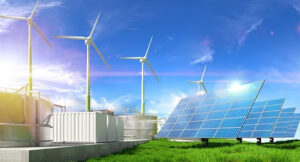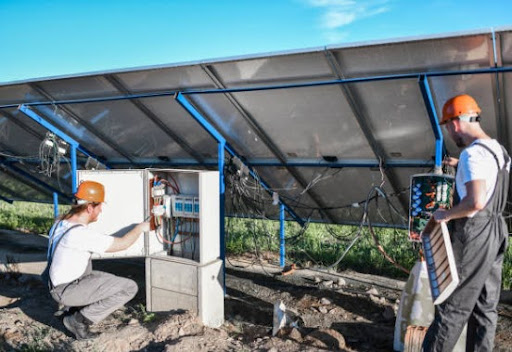Farming and energy are rapidly evolving. With climatic issues and escalating expenses, farmers are increasingly looking towards sustainable solutions. Solar energy has emerged as a wise option to cut down energy expenses and save the environment.
This is where micro inverters meet this need. Micro inverters are tiny but high-performance units that enable farms to maximize sunlight energy through enhanced system efficiency. Micro inverters serve as the bridge connecting clean power and smart farming, enabling growth as well as green ambitions.
What are Micro Inverters?
Micro inverters are small devices attached to single solar panels. Micro inverters change the solar power from each panel into regular electricity that your home or farm can use.

Unlike string inverters that control many panels together, high performance micro inverters work on their own—one for each panel. What this means is that if one panel is covered or soiled, it won’t impact the others. You have improved performance, more power, and simpler system monitoring—perfect for farms with panels dispersed across various locations.
Solar Energy in Farming: The New Way of Life
More farms now use solar power. It runs things like lights, water pumps, fences, and even automatic feeders.
Why farmers are choosing solar:
- Power all day and night: great for farms far from the main power lines.
- Saves money over time: less spending on fuel and electricity.
- Environmentally friendly option: Lowers carbon footprint and promotes green farming methods.
As the price of energy increases, solar adoption for farming is no longer a choice—it’s the new normal.
Why Micro Inverters Are Ideal for Irregular Farmland
Farm designs are never ideal. Shadows are cast by trees, structures, and equipment onto panels. Roof pitches or field slopes are also uneven, making some panels less efficient than others.
Micro inverters address this by operating separately on every solar panel. Thus, if one panel is shaded or angled differently, the others continue to generate full power. This prevents energy wastage and makes the entire system efficient, perfect for farms with uneven terrain and panel positioning.
The Function of Micro Inverters in Agricultural Systems
In agricultural environments, solar panels are commonly installed on barns, sheds, and in the fields. Microinverters make this sort of installation easy to manage by allowing each panel to operate independently despite being so far apart.
Most important advantages for farmers:
- Expandable configuration: It’s easy to expand the system by adding additional panels on a gradual basis.
- Easier maintenance: Dropped or malfunctioning panels are simple to diagnose and replace without having to take the entire system down.
- Efficient use of energy: Each component of the farm receives consistent solar power, boosting efficiency as a whole.
Micro inverters’ flexibility makes them an intelligent investment for expanding and diversified farm operations.
Promoting Smart Farming and IoT Devices
Today, simply put, modern devices used on farms can include sensors in the soil, climate monitors, and intelligent irrigation systems. Most devices operate with power, some of them needing a continuous source of power to function optimally at remote locations.
Micro inverters provide this reliability, a continuous power supply. Because a panel does not depend on the others, the whole system is much less prone to failure. That is real-time information, seamless automation, and improved decision making-all the essence of smarter and more efficient farming.
Increasing Farm Profitability With Energy Independence
Energy is one of farming’s largest expenses. By going solar with micro inverters, farmers can reduce their electric bills by a great amount. More efficient panels translate into more usable power, where it’s needed most.
Profit-enhancing advantages:
- Reduced operating expenses: Reduced dependence on grid electricity or fuel
- Additional income: Generate extra income by selling excess energy to the grid via feed-in tariffs
- Long-term savings: Lower energy bills year over year
This independence from energy allows farmers greater control over budgets and planning.
Real-Life Case Studies and Farm Examples
Numerous farms around the globe are already experiencing the advantages of microinverters used with solar systems.
- Germany: A dairy farm installed micro inverters on barn rooftops. Notwithstanding shading by surrounding trees, the system retained 96% efficiency throughout the year.
- United States: Micro inverters powered an irrigation and storage system at a California fruit farm. They saved 30% of energy in the first year.
- India: A rice farm implemented micro inverters for its water pumps that were powered by solar energy. Production remained constant even on cloudy days, enhancing irrigation timetables and the yield of crops.
The above demonstrates how microinverters provide stable power and increase farm productivity in real circumstances.
Impact on the Environment and Farm Economy
Installing microinverters at solar farms provides real environmental and financial benefits: Each solar panel is allowed to work optimally, thereby minimizing overall energy wastage.
Positive contributions include these:
- Cutting pollution: Clean solar power replaces dirty fuels like diesel or coal.
- Better food supply: Steady energy helps crops grow without delays or power cuts.
- Strengthening Rural Economies: Lower energy costs and incidental incomes provide a boost, with more strength for farm businesses.
Micro-inverters promote a more sustainable and secure future by supporting both food and clean energy.

Considerations and Challenges
Micro-inverters have their clear merits; however, there are certain factors that the farmer will first understand before choosing a Micro inverter.
Here are some of them:
- Initial cost: Micro-inverters are more expensive than conventional systems per panel.
- Expertise: The proper configuration might need the assistance of expert installers.
- Compatibility problems: Older solar installations might require upgrades to microinverter compatibility.
- Maintenance accessibility: Although much easier and more specific in tracking, these repairs may take a long time when the installed panels are overhead on large rooftops or big fields.
However, proper planning with veteran solar companies can easily help in solving all these concerns.
Conclusion
Micro inverters are changing the way farms use solar energy. By optimizing performance at every panel level, they secure a steady supply of energy for everything from irrigation to smart devices. This leads to lowered electricity bills and enhanced efficiency, with reduced breakdowns being important now, in the era of high-tech agriculture.
In addition to the farms, micro inverters now form an integral part of larger environmental objectives: reducing carbon footprints, supporting renewable energies, and making farms energy-independent. As energy consumption continues to rise, the implementation of this technology will be propelling a boost to a sustainable rural economy. This crystal clear step is making sustainable farming realizable and long-term profit achievable.




